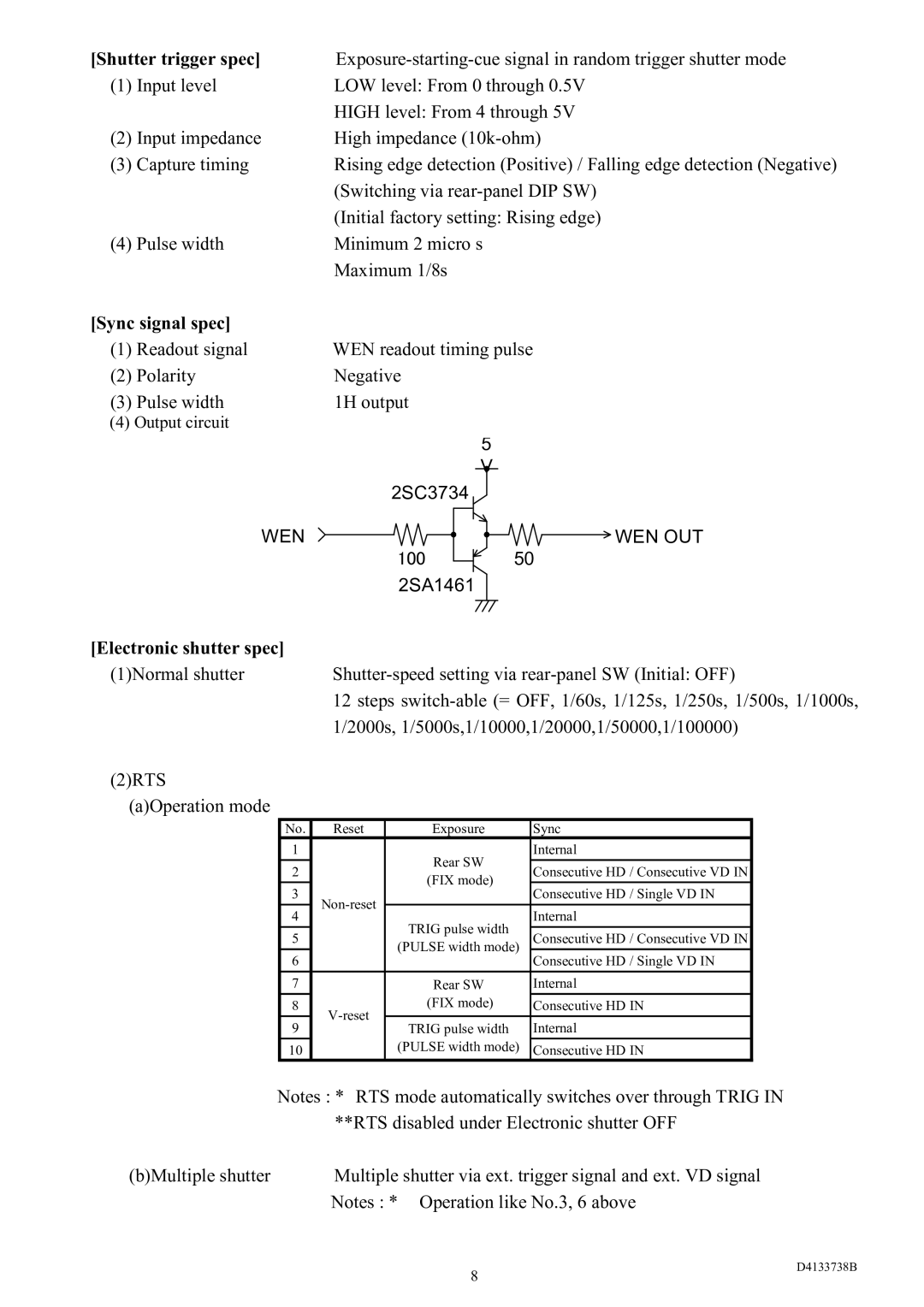
[Shutter trigger spec] | ||||
(1) | Input level | LOW level: From 0 through 0.5V | ||
|
| HIGH level: From 4 through 5V | ||
(2) | Input impedance | High impedance | ||
(3) | Capture timing | Rising edge detection (Positive) / Falling edge detection (Negative) | ||
|
| (Switching via | ||
|
| (Initial factory setting: Rising edge) | ||
(4) | Pulse width | Minimum 2 micro s | ||
|
| Maximum 1/8s | ||
[Sync signal spec] |
|
|
| |
(1) | Readout signal | WEN readout timing pulse | ||
(2) | Polarity | Negative | ||
(3) | Pulse width | 1H output | ||
(4) Output circuit |
|
|
| |
|
| 5 | ||
|
| 2SC3734 |
| V |
|
|
|
| |
|
|
| ||
|
|
|
|
|
WEN ![]()
100
2SA1461
 WEN OUT
WEN OUT
50
[Electronic shutter spec]
(1)Normal shutter
12 steps
(2)RTS (a)Operation mode
No. | Reset | Exposure | Sync | |
1 |
|
| Internal | |
|
| Rear SW |
| |
2 |
| Consecutive HD / Consecutive VD IN | ||
| (FIX mode) | |||
|
|
| ||
3 | Consecutive HD / Single VD IN | |||
| ||||
|
|
| ||
4 |
| Internal | ||
|
| |||
|
| TRIG pulse width |
| |
5 |
| Consecutive HD / Consecutive VD IN | ||
| (PULSE width mode) | |||
6 |
| Consecutive HD / Single VD IN | ||
|
| |||
|
|
|
| |
7 |
| Rear SW | Internal | |
8 | (FIX mode) | Consecutive HD IN | ||
|
|
| ||
9 | TRIG pulse width | Internal | ||
| ||||
|
| (PULSE width mode) |
| |
10 |
| Consecutive HD IN |
Notes : * RTS mode automatically switches over through TRIG IN **RTS disabled under Electronic shutter OFF
(b)Multiple shutter | Multiple shutter via ext. trigger signal and ext. VD signal |
| Notes : * Operation like No.3, 6 above |
8
D4133738B
